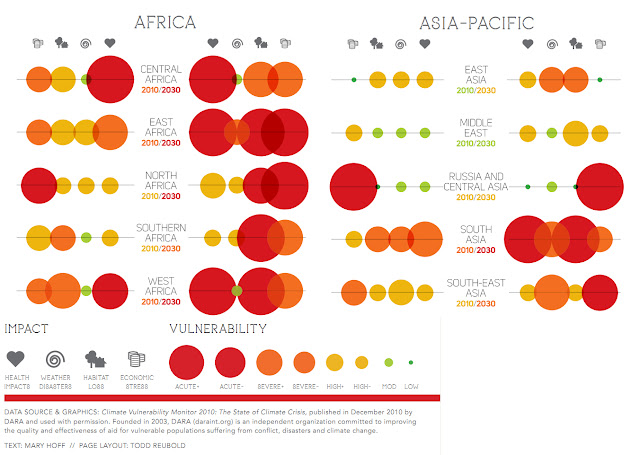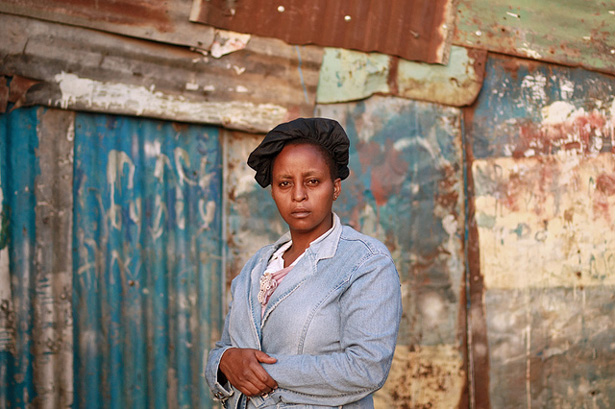Showing posts from category *Main.
-
How Does Organic Farming in the U.S. Affect Global Food Security?
›The feature story for last month’s Wilson Center newsletter, Centerpoint, was on the popular full-day conference “Rebuilding the U.S. Economy – One Heirloom Tomato at a Time,” hosted by the Program on America and the Global Economy in March. The conference focused on organic, local farming and the idea of creating “sustainable” food production that was healthier but also better for the economy than relying on imports from afar.
ECSP was asked to provide some international context for the discussion with a brief “Point of View.” I tried to paint a little bit of the big picture 21st century supply and demand story and give a sense of how today, globalization has helped linked everyone in this food security discussion:Dramatic events over the last year have shone a spotlight on the problem of global food security: massive fires in Russia, which reduced wheat supplies; famine and drought in Niger and Chad; and food price riots in the Middle East and elsewhere. These stresses come amid price spikes that echo the food crises of 2008 and reveal the linked nature of food security today and some of the fundamental challenges facing poor countries’ efforts to feed their growing populations.
What do you think: What’s the best way to inject the urgency that people looking at demographics and consumption rates around the world are feeling about global food security into a discussion about organic agriculture in the United States? Is there a tension between quality and quantity of food in the organic vs. agrobusiness debate that needs to be addressed in a global context? And what’s the role of policy in determining that balance?
In most countries, food insecurity is a symptom of poverty, poor governance, and/or poor infrastructure. For example, developed countries can often rebound from natural disasters relatively quickly. However, in drought-prone countries like Niger and Chad or flood victims like Pakistan and North Korea, such structural weaknesses leave them unable to bounce back as quickly from extreme events. This makes development efforts more difficult and can cause vulnerable countries to quickly become a burden on their neighbors or more prone to internal instability.
In the long term, reducing vulnerability in developing countries will be one of the most critical factors to ensuring global food security. But to meet the projected demand from increased consumption and continuing population growth, global yields must also increase.
The Green Revolution of the 1960-70s saved millions of lives by introducing heartier strains of rice and improving other staple crops in South and Southeast Asia, and most agree that a “Second Green Revolution” (whether or not it looks like the first) will likely be necessary. If so, the current tensions in the West over organic or sustainable practices versus agribusiness models will need to be reconciled in a way that can provide the most immediate help for the world’s hungry.
An important requirement, however, is that in a more resource-constrained world, these yields must be increased without destroying our future capacity. How we go about this, whether through traditional industry, organic techniques, or a mixture of both, will be one of the defining challenges of the 21st century. -
Population Growth and Climate Change Threaten Urban Freshwater Provision
›May 6, 2011 // By Emanuel FeldBy 2050, more than one billion urban dwellers could face perennial freshwater shortages if major improvements are not made to water management practices and infrastructure, according to a recent study published in the journal PNAS, “Urban Growth, Climate change, and Freshwater Availability.” These challenges will arise as hydrologic changes due to climate change compound “an unprecedented wave of urban growth,” with nearly three billion additional urban residents forecast by 2050. “It is a solvable problem,” the study argues, “but one that will take money, time, political will, and effective governance.”
Using demographic data from the Earth Institute at Columbia University, as well as a variety of climate and city-level demographic scenarios, the researchers estimate per-capita water availability for cities in the developing world, where urban growth will be most rapid. They advise, however, that their findings should be taken as conservative estimates, since the study assumes cities can use all nearby water and does not account for key challenges relating to water quality and delivery to urban centers.
In 2000, 150 million people in developing countries lived in urban areas that could not support their own water requirements (i.e. less than 100 liters available per person per day). By 2050, according to the study, urban population growth alone could bring this figure to 993 million and more than three billion could face intermittent shortages at least one month out of the year. When the researchers expanded the area on which cities can draw upon to include a 100 km buffer zone, these values drop to 145 million and 1.3 billion, respectively.
However, once climate and land use change are included in the models, the aggregate number of people facing perennial shortages rises a further 100 million, if only water stores within the urban area are considered, or 22 million, for the 100 km buffer zone model.
Remarkably, these aggregate figures differ very little among the various demographic and climate scenarios. The particularities of the challenge do however vary at the regional level. Perennial water shortage will generally be limited to cities in the Middle East and North Africa. Seasonal water shortages, on the other hand, will be geographically widespread, although rapidly urbanizing India and China will be especially hard hit.
The study acknowledges the temptation to view water shortage “as an engineering challenge.” Still, the lead author, Rob McDonald of The Nature Conservancy, cautions against exclusive reliance on grey infrastructure solutions (e.g. canals and dams) in an article for Nature Conservancy, saying:Some new infrastructure will be needed, of course – that’s the classic way cities have solved water shortages. But especially in parts of the world where there’s lots of cities, just going out farther or digging deeper to get water can’t be the only solution.
Instead, McDonald and co-authors Pamela Green, Deborah Balk, Balazs M. Fekete, Carmen Revenga, Megan Todd, and Mark Montgomery, emphasize the need for cities to encourage more efficient water use by their industrial and residential sectors, as well as the potential to engage the water-intensive agriculture sector in surrounding rural areas.
“Bottom line,” McDonald said in an interview with Robert Lalasz of The Nature Conservancy’s Cool Green Science blog, “don’t think of those high numbers as a forecast of doom. They are a call to action.”
Emanuel Feld is a student at Yale University studying economics and the environment.
Sources: Cool Green Science, PNAS, The Nature Conservancy.
Photo Credit: Adapted from “Chennai prayed too hard…. Part I,” courtesy of flickr user Pandiyan. -
Designing Health and Population Programs to Improve Equity: Moving Beyond the Rhetoric
›“There needs to be ongoing flexibility and creativity in our ways of approaching health equity,” said John Borrazzo of the U.S. Agency for International Development (USAID) at a recent Global Health Initiative event at the Wilson Center. Borrazzo is the chief of the Maternal and Child Health Division in the Bureau for Global Health. He moderated a discussion on practical strategies to improving access to health services for the world’s poor and other marginalized groups, with panelists Mickey Chopra, chief of health and associate director of programmes at UNICEF; Davidson Gwatkin, senior fellow at the Results for Development Institute and senior associate at Johns Hopkins Bloomberg School of Public Health; Cesar Victoria, professor of epidemiology at the Federal University of Pelotas in Brazil; and Jennifer Luna, senior monitoring and evaluation adviser for the Maternal and Child Health Integrated Program (MCHIP). [Video Below]
MDG 4: An Equity Approach
“Massive benefits can be gained by reaching the poorest and most marginalized,” said Chopra. “It’s actually more cost effective to have an equity-based approach; it’s not just right in principle, it’s right in practice.”
While there has been some progress in reducing the rates of mortality for children under five (the UN’s Millennium Development Goal 4), Chopra said “there has to be a change” if they are going to be achieved completely. Most of the 30 percent decline in child mortality so far has been in Asian countries, while Africa as a whole remains stagnant. Further, two-thirds of the 35 countries that have made significant progress to meet MDG 4 show worsening inequalities between the highest and lowest income brackets of the population.
In the majority of countries, the “rich are still capturing most of the benefits of new investments and interventions,” said Chopra. “The challenge at the program and policy levels is to understand why there is this gap between the richest and the poorest in terms of uptake of critical interventions.”
Delivery channels are faced with “bottlenecks” that prevent services from reaching marginalized communities, said Chopra. Clinic-based services often lack adequate human resources, consistency in the quality of service, and can be very expensive. Population-oriented services, which include government and NGO-led outreach and scheduled services at health facilities, are often challenged with low demand and lack of continuity, while availability and cost of health commodities are barriers for community-based interventions delivered through local organizations or social marketing campaigns.
Shifting delivery of services within channels, appropriately shifting delivery to different channels, or improving the performance of an established delivery channel could help increase uptake of treatment and prevention among poor and marginalized communities, concluded Chopra. He stressed that progress need not come at the expense of the poor. According to a UNICEF report, Ghana, Eritrea, Nepal and Malawi have all reduced under-five mortality and inequality by prioritizing providing essential services to the most marginalized communities first.
Designing Equity-Based Health Programs
“Performance variability in terms of equity across countries is very large,” said Gwatkin. “In some places a given technique can work well and in others it can be a complete flop.”
To pick the right technique for the right place, Gwatkin advocated for an iterative approach to program design and implementation, beginning with setting targets in terms of the poor population group of concern. After fully assessing country-specific conditions, a set of potential pro-poor interventions can be selected, based on an analysis of current interventions and suggested alternatives as well successful interventions in other countries. Each of these interventions should be delivered to a large, representative area, he said.
“The next step is to find out how well you have done,” said Gwatkin, stressing the importance of assessing and monitoring interventions with a specific focus on the marginalized target group. Successful approaches should be expanded, while those that are not having the intended benefits of helping the poorest communities should be modified or abandoned.
In sum, said Gwatkin, “It’s more promising to focus on designing a process to fit techniques to individual country settings than to focus on the techniques themselves.” Doing this helps effectively integrate equity concerns into the design and implementation of programs, and as a result, he said, can have a major impact on improving the lives of the poorest people in developing countries.
Analyzing Equity to Maximize Impact
“It’s always possible and useful to include equity in monitoring and evaluation, however, it has to be planned ahead of time,” said Victoria.
The Countdown to 2015 Initiative is an effort to monitor progress made towards the health-related Millennium Development Goals globally. The Countdown’s efforts not only aim to promote access to health services at the aggregate level but also specifically to ensure the equitable distribution and uptake of health services among disadvantage populations, said Victoria.
Generally, in countries with high coverage of preventative and treatment services, like Brazil, there is “bottom inequity,” said Victoria, in which the poor are much worse off than everyone else. Targeting the poor specifically in such countries is therefore essential to improving equity.
Alternately, Victoria continued, countries with low coverage at all levels, like Cambodia or Haiti, suffer from “top inequity,” in which the rich are typically much better off the rest of the population. These countries should work towards increasing coverage for all people and focus on the poor after there are some universal gains, he said.
“Analyzing the shapes of inequity curves can help drive decisions about delivery channels and targeting…and can lead to practical strategies for maximizing the impact of interventions,” concluded Victoria.
Health Equity: From Evidence to Practice
“Projects often state that they are really interested in equity, but when you read the project descriptions, you don’t see exactly what they mean by equity or how they plan on addressing it,” said Luna, speaking of her work at MCHIP.
Luna presented the Health Equity Guidance Document that outlines a systematic, six-step process for professionals who design and implement community-oriented projects to ensure equity is effectively integrated into their programs:1) Understand the equity issues in the project area
Luna stressed that there is no “one size fits all” strategy: “This approach is not a prescriptive one; it presents a series of concepts and approaches to take into consideration and then make decisions.” But for program implementers on the ground, she said, these guidelines and tools “should help lead to a coherent health equity strategy and can serve as a basis for dialogue among stakeholders.”
2) Identify the disadvantaged group on which to focus
3) Decide what is in the project’s manageable interest to change
4) Define equity goals, objectives, and a project-specific definition of equity
5) Determine equity strategies and activities
6) Develop equity-focused monitoring and evaluation
Sources: UNICEF, United Nations Development Programme, World Health Organization.
Image Credit: “Malaria prevention, Kenya,” courtesy of flickr user DFID. -
Momentum Magazine
Where Does It Hurt? Climate Vulnerability Index
›The original version of this article appeared in the University of Minnesota’s Momentum Magazine. Text by Mary Hoff, page layout by Todd Reubold.
The punch climate change packs varies from one country, region, or continent to another. DARA, a Madrid-based humanitarian advocacy organization, recently partnered with the Climate Vulnerable Forum, comprising countries particularly vulnerable to climate change, to create Climate Vulnerability Monitor 2010, an atlas of vulnerability. This infographic presents a small portion of the picture the Climate Vulnerability Monitor paints.
Vulnerability is grouped into four categories: health impacts, weather disasters, habitat loss and economic stress. Circles on the left side of each set indicate relative magnitude of vulnerability in 2010. Circles on the right indicate the same for 2030.
See the full “Where Does it Hurt?” infographic on the Momentum site or download the Climate Vulnerability report from DARA.
Image Source: Climate Vulnerability Monitor 2010: The State of Climate Crisis, published in December 2010 by DARA (daraint.org). Used with permission. -
Managing Our Forests: Carbon, Climate Change, and Fire
›“We cannot manage our planet if we cannot manage our forests,” said William Sommers, a research professor with the Center for Climate and Society at George Mason University, during a recent event at the Woodrow Wilson Center. The event, which coincided with the International Year of Forests, was the fourth in a series co-sponsored by George Mason University and the Environmental Change and Security Program on “Managing the Planet.” Sandra Brown, director and chief scientist of the Ecosystems Services Unit at Winrock International and David Cleaves, climate change advisor to the chief of the U.S. Forest Service, joined Sommers and moderator Thomas Lovejoy, professor at George Mason, to discuss the impact of climate change, carbon, and fire on the world’s forests. [Video Below]
Fire: A “Critical Element”
“Forests have evolved over Earth’s history,” said Sommers, with fire being a “constant shaper” of this evolution. Humans first used fire as a tool about 400,000 years ago, and around 10,000 years ago, we began using fire for agricultural purposes, which, Sommers said, can be considered the beginning of forest management.
The resulting carbon dioxide (CO2) emissions have been an important consequence of this human intervention, Sommers said. CO2 emissions have an “exceptional persistence” in the atmosphere, which, explained Sommers, “commits us to irreversible warming over the next 1,000 years.”
In order to counteract these warming effects, a replacement for the “business-as-usual” approach is needed, Sommers said. If not, he warned, CO2 concentrations could reach a thousand parts per million by the end of the century: “It has been 30 to 100 million years since Earth experienced that level of atmospheric CO2 concentration, and Earth was extremely warm at that time.”
“Fire remains a critical element of the earth’s system and is highly sensitive to climate change,” said Sommers. The potential feedback relationship between fire and climate change was illustrated in dramatic fashion in the summer of 2010 with the outbreak of wildfires in Russia after the hottest summer temperatures on record.
Time is running short, Sommers warned, to answer the question of whether humans can anticipate and respond to climate change and manage forests in a sustainable manner.
Reducing Emissions & Improving Management
“Logging can be well-planned and well-designed or maybe not so well-planned,” said Brown as she spoke about her research on the logging industry in the tropics. Sustainable forest management in the tropics is still “a bit of the wild west” in some countries, though the situation is improving slightly, she said.
One way to improve management and reduce greenhouse gas emissions would be through the REDD+ (Reducing Emissions from Deforestation and Degradation) program of the United Nations. REDD+ can provide incentives, Brown said, for people to come up with useful innovations and improvements to forest management. But, she warned, “the longer we keep waiting, [the more] forests are diminishing.”
When a tree is felled, Brown said, there is a lot of collateral damage. An estimated one billion metric tons of CO2 are released every year from logging in the tropics of Africa and Latin America, she explained. One-half of these emissions are from the harvesting itself and the other half is from incidental damage and infrastructure, such as from the skid trails and haul roads needed to transport the logs out of the forest.
Therefore, it is important for all possible reduction steps to be taken, Brown said: “Where we have opportunities to produce goods with reducing emissions, we need to take those opportunities. We just can’t keep thinking, ‘That’s too small to worry about.’ If there’s what we call ‘low-hanging fruit,’ why not go for it?”
In order to reduce emissions and improve management, Brown suggested reducing avoidable waste by trimming more off of felled logs to increase volume, creating a management plan wherein felled logs are accurately mapped and skid trails are better planned, and using silvicultural treatments to speed the forest’s recovery.
Integrating Climate Change Into Risk Management
The job of the U.S. Forest Service has always been that of a “stress manager,” said Cleaves. Climate change is likely to ramp up existing stressors, such as drought and wildfires, which is why it is necessary for the Forest Service to integrate climate change adaptation techniques into the existing stress manager role. “We feel that there is no such thing as a separate climate change program,” he said.
Many difficult choices will have to be made to address climate change, Cleaves said: “We can’t afford the scale of the problem; we can’t afford to solve it all. We need to be able to prioritize.” These choices will have to be based on economic, social, and ecological values in order to “manage risks around the full sweep of the elements of sustainability,” he said.
The country’s forests are changing and we have already seen whole system change, Cleaves explained. For example, climate change has altered snow cover patterns leading to the decline of over half a million acres of yellow-cedar forest in Alaska.
Other threats facing U.S. forests include disease (such as white pine blister rust), increased variability of fires, increased housing growth near forested areas, and the possibility of forests turning from carbon sinks into carbon sources. That is to say, as forests are destroyed through fires, clearing, or disease, they release back into the environment the carbon they have absorbed.
Risk must be integrated into the decision-making process of the agency, and to this end the Forest Service has created the National Roadmap for Responding to Climate Change. But in order to meet these climate change challenges, Cleaves said, “we have to get moving.”
Sources: U.S. Fish and Wildlife Service, USA Today.
Photo Credit: “Michigan,” courtesy of flickr user The U.S. Army. -
Accessing Maternal Health Care Services in Urban Slums: What Do We Know?
›“Addressing the needs of urban areas is critical for achievement of maternal health goals,” said John Townsend, vice president of the Reproductive Health Program at the Population Council. “Just because there is a greater density of health services does not mean that there is greater access.”
Townsend moderated a discussion on the challenges to improving access to quality maternal health care in urban slums as part of the 2011 Maternal Health Dialogue Series with speakers Anthony Kolb, urban health advisor at USAID; Catherine Kyobutungi, director of health systems and challenges at the African Population Health Research Center; and Luc de Bernis, senior advisor on maternal health at the United Nations Population Fund (UNFPA). [Video Below]
Mapping Urban Poverty
“Poverty is becoming more of an urban phenomenon every day,” said Kolb. With over 75 percent of the poor in Central Asia and almost half of the poor in Africa and Asia residing in cities and towns by 2020, “urban populations are very important to improving maternal health,” he added.
Collecting accurate data in informal settings such as slums can be very challenging, and there is often a “systematic undercounting of the urban poor,” said Kolb. Data often fails to capture wealth inequality in urban settings, and there is often a lack of attention to the significant variability of conditions between slums.
Kolb also warned about the risk of generalization: “Slums and poverty are not the same.” In practice, there is not a standardized definition of what constitutes a slum across countries, he said. “It is important to look at different countries and cities individually and understand how inequality is different between them.” Slum mapping can help to scope out challenges, allocate resources appropriately, and identify vulnerability patterns that can inform intervention design and approach, he said.
Maternal Health in Nairobi Slums
Addressing the maternal health needs of the nearly 60 percent of urban residents who live in slums or slum-like conditions will be a critical step to improving maternal health indicators of a rapidly urbanizing Kenya, said Kyobtungi.
Only 7.5 percent of women in Kenyan slums had their first antenatal care visit during their first trimester of pregnancy and only 54 percent had more than three antenatal care visits in all – rates significantly lower than those among urban women in non-slum settings.
“In some respects, [the urban poor] are doing better than rural communities, but in other ways they are behind,” said Kyobtungi. But, she said, there are many unique opportunities to improve maternal health in slums: “With these very high densities, you do have advantages; with very small investments, you can reach many more people”
Output-based voucher schemes – in which women pay a small fee for a voucher that entitles them to free, high-quality antenatal care, delivery services, and family planning – have been implemented to help poor, urban women access otherwise expensive services. But poor attitudes towards health care workers, transportation barriers, and high rates of crime still prevent some women from taking advantage of these vouchers, said Kyobtungi.
The majority of maternal health services in slums are provided by the private facilities, though size and quality vary widely. “There is a very high use of skilled attendants at delivery, but the definition of skilled is questionable,” said Kyobtungi
“Without supporting the private sector,” Kyobutungi said, “we cannot address the maternal health challenges within these informal settlements.” Combined with an improved supervision and regulation system, providing private maternal health facilities with training, equipment, and infrastructure could help to improve the quality of services in urban slums, she concluded.
Reducing Health Inequalities
“While we have evidence that health services, on average, may be better in urban areas than in rural areas, this often masks wide disparity within the population,” said de Bernis. “Reducing health inequities between and within countries is a matter of social justice.”
When it comes to family planning, total fertility rates are lower in cities, but “the unmet need…is still extremely important in urban areas,” explained de Bernis. Many poor women in cities, especially those who live in marginalized slum populations, do not have access to quality reproductive health services – a critical element to reducing maternal morbidity and mortality rates.
Economic growth alone, while important to help improve the health status of the poor in urban settings, will not solve these problems, said de Bernis. To reduce health disparities within countries, de Bernis advocated for “appropriate social policies to ensure reasonable fairness in the way benefits are distributed,” including incorporating health in urban planning and development, strengthening the role of primary health care in cities, and putting health equity higher on the agenda of local and national governments.
Event Resources:Source: African Population Research Center, United Nations Population Fund.
Photo Credit: “Work Bound,” courtesy of flickr user Meanest Indian (Meena Kadri). -
Watch ‘Dialogue’ TV on Integrating Development, Population, Health, and the Environment
›Last week on the Wilson Center’s Dialogue radio and television program, host John Milewski spoke with Geoff Dabelko, director of ECSP, Roger-Mark De Souza, vice president for research and director of the Climate Program for Population Action International, and George Strunden, vice president of Africa programs for the Jane Goodall Institute. They discussed the challenge of integrating population, health, and environmental programs (PHE) to address a broad range of livelihood, development, and stability issues. [Video Below]
“Many times that we tackle development or poverty and human well-being challenges…we do it in an individual sector – the health sector, or agriculture sector, or looking at issues of water scarcity – and it makes sense in many respects to take those individual focuses,” said Dabelko. “But of course people living in these challenges, they’re living in them together…so both in terms of understanding the challenges…and then in responding to those challenges, we have to find ways to meet those challenges together.”
De Souza noted that the drive for integrated development stems from the communities being served, not necessarily from outside aid groups. “We’ve seen that there’s a greater impact because there’s longer sustainability for those efforts that have an integrated approach,” he said. “There’s a greater understanding and a greater appreciation of the value that [PHE] projects bring.”
Strunden said that the Goodall Institute has found similar success in tying health efforts with the environment in places where previously conservation work alone had been unsuccessful.
The panelists also discussed the role of population in broader global challenges, including energy, water, and food scarcities, and women’s rights.
Dialogue is a co-production of the Woodrow Wilson International Center for Scholars and MHz Networks. The show is also available throughout the United States on MHz Networks, via broadcast and cable affiliates, as well as via DirecTV and WorldTV (G19) satellite.
Find out where to watch Dialogue where you live via MHz Networks. You can send questions or comments on the program to dialogue@wilsoncenter.org. -
Watch: Jennifer Dabbs Sciubba on Population and National Security
›April 28, 2011 // By Schuyler Null“Long-term trends really are what shape the environment in the future,” said Jennifer Dabbs Sciubba in this interview with ECSP. “As we’ve seen recently with…revolution in North Africa, it’s the long-term trends that act together for these things to happen – I like to say demography is not usually the spark for a conflict but it’s the fodder.”
Sciubba is the Mellon Environmental Fellow in the Department of International Studies at Rhodes College. In her new book, The Future Faces of War: Population and National Security, she discusses the importance of demographic trends in relation to security and stability, including age structure, migration, youth bulges, population growth, and urbanization.
One of the most important things to emerge from the book, said Sciubba, is that countries that are growing at very high rates that are overwhelming the capacities of the state (like many in sub-Saharan Africa) really will benefit from family planning efforts that target unmet need.
Afghanistan, for example, “has an extremely young age structure,” Sciubba pointed out. “So if you’re trying to move into a post-conflict reconstruction atmosphere…you absolutely have to take into account population and the fact that it will continue to grow.”
“Even if there are major moves now in terms of reducing fertility, they have decades ahead of this challenge of youth entering the job market,” Sciubba said. “Thousands and thousands more jobs will need to be created every year, so if you have a dollar to spend, that’s a really good place to do it.”
For more on Jennifer Dabbs Sciubba and The Future Faces of War, see her book launch at the Wilson Center with Deputy Under Secretary Kathleen Hicks of the Department of Defense (video) and some of her previous posts on The New Security Beat.










